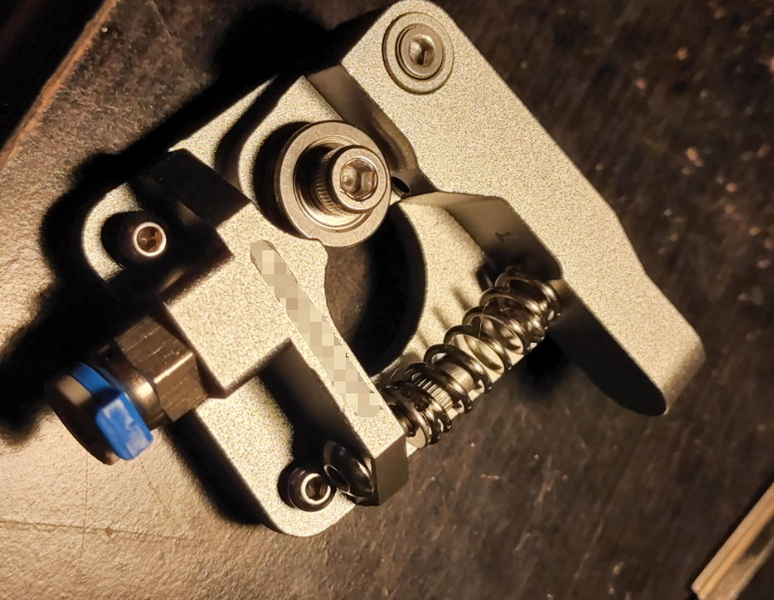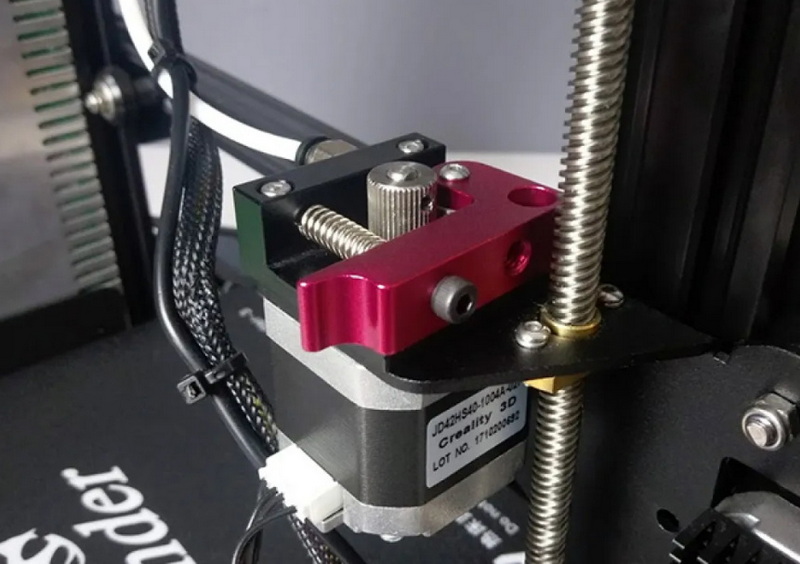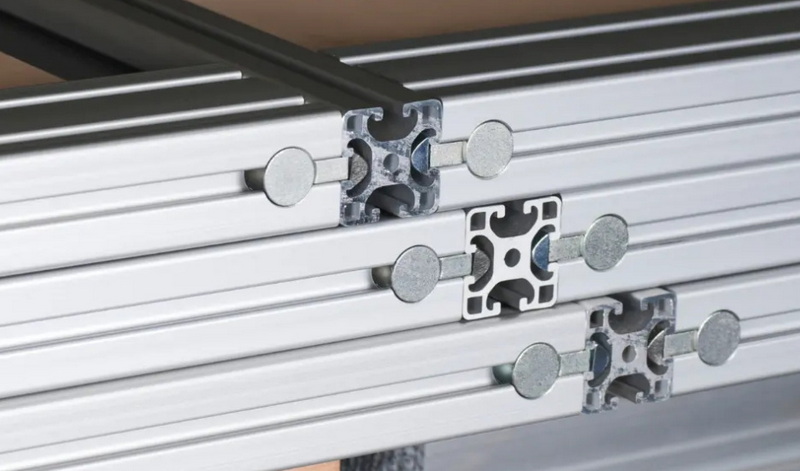Content Menu
● Understanding Extruders in 3D Printing
● Advantages of MK8 Aluminum Extruders
● Delving Deeper into the Benefits
● Installation Process
● Choosing the Right MK8 Aluminum Extruder
● Maintenance Tips for Your MK8 Aluminum Extruder
● Troubleshooting Common Issues
● The Impact on Print Quality: Real-World Examples
● The Broader Implications: Enhancing Your 3D Printing Experience
● Comparison Table: MK8 Aluminum vs Stock Extruders
● Conclusion
● Frequently Asked Questions (FAQs)
>> 1. What types of filaments can I use with an MK8 aluminum extruder?
>> 2. Is it difficult to install an MK8 aluminum extruder?
>> 3. Will upgrading my extruder void my printer's warranty?
>> 4. How does an aluminum extruder improve print quality?
>> 5. Can I use an MK8 aluminum extruder on any 3D printer?
● Citations:
3D printing has revolutionized the way we create prototypes, models, and even finished products. However, the quality of your prints can heavily depend on the components of your 3D printer, particularly the extruder. One of the most significant upgrades you can make to enhance your printing experience is switching from a stock extruder to an MK8 extruder made of aluminum. This article will explore the reasons why opting for an MK8 aluminum extruder is a wise choice, detailing its advantages, installation process, and frequently asked questions.

Understanding Extruders in 3D Printing
An extruder is a critical component of a 3D printer that feeds filament into the hot end, where it is melted and deposited layer by layer to create an object. Stock extruders are often made from plastic or lower-quality materials, which can lead to various issues such as inconsistent extrusion, wear and tear, and difficulties when working with flexible or specialty filaments.
Advantages of MK8 Aluminum Extruders
Switching to an MK8 aluminum extruder offers numerous benefits:
- Durability: Aluminum extruders are significantly more robust than their plastic counterparts. They can withstand higher mechanical stress without cracking or warping, ensuring longevity[1].
- Improved Filament Control: The design of aluminum extruders allows for better grip on the filament[1]. This results in smoother feeding and reduces the likelihood of slippage, leading to more consistent extrusion[3].
- Higher Temperature Resistance: Aluminum can handle higher temperatures better than plastic. This allows users to experiment with a broader range of filaments, including those that require higher extrusion temperatures.
- Precision Printing: With an aluminum MK8 extruder, users can achieve better layer adhesion and reduced stringing[3]. This contributes to finer details and smoother surfaces in printed objects.
- Ease of Installation: Most MK8 aluminum extruders come as DIY kits that include all necessary components for installation[3]. This makes it easy for users to upgrade their printers without needing extensive technical knowledge.
Delving Deeper into the Benefits
To truly appreciate the advantages of an MK8 aluminum extruder, let's explore each benefit in more detail:
Enhanced Durability
Stock extruders, often made of plastic, are prone to wear and tear. Over time, the constant pressure and friction from the filament can cause them to crack or warp. This leads to inconsistent extrusion and a decline in print quality. Aluminum extruders, on the other hand, are built to last[3]. The robust metal construction can withstand significant mechanical stress without showing signs of wear. This not only extends the lifespan of your extruder but also ensures consistent performance over time.
Superior Filament Control
One of the most common issues with stock extruders is their inability to maintain a consistent grip on the filament. This can result in slippage, under-extrusion, and inconsistent layer adhesion. The MK8 aluminum extruder is designed with a more aggressive grip that firmly holds the filament, providing better control during the printing process[1]. This enhanced grip minimizes slippage and ensures a steady flow of filament, resulting in more accurate and reliable prints.
Expanded Material Compatibility
Stock extruders often struggle with high-temperature filaments like ABS and nylon. The plastic components can soften or deform under extreme heat, leading to extrusion problems and potentially damaging the extruder itself. Aluminum extruders excel in high-temperature environments due to their superior heat resistance[1]. This allows you to confidently print with a wide range of materials, including high-performance filaments that require elevated temperatures.
Unlocking Precision Printing
Achieving high-quality prints requires precise control over the extrusion process. Inconsistent extrusion can lead to a variety of issues, such as stringing, blobs, and poor layer adhesion. The MK8 aluminum extruder offers superior precision compared to stock extruders[3]. Its consistent filament feeding and stable temperature control contribute to smoother layers, reduced stringing, and overall improved print quality. Whether you're printing intricate models or functional parts, an aluminum extruder can help you achieve exceptional results.
Simplified Installation and Maintenance
Upgrading your extruder might seem like a daunting task, but most MK8 aluminum extruder kits are designed for easy installation[3]. These kits typically include all the necessary components, along with clear instructions that guide you through the process. Additionally, aluminum extruders require minimal maintenance compared to their plastic counterparts. Their durable construction and resistance to wear ensure long-lasting performance with little need for repairs or replacements.

Installation Process
Installing an MK8 aluminum extruder is straightforward and can typically be done in a few steps:
1. Remove the Stock Extruder: Begin by unbolting the existing plastic extruder from your 3D printer[2]. Make sure to keep any screws or components that may be reused.
2. Install the Aluminum Extruder: Align the new MK8 aluminum extruder with the mounting holes on your printer[2]. Secure it using the screws provided in your kit.
3. Connect Filament Path: Ensure that the filament path is clear and properly aligned with the hot end[1]. This may involve adjusting or replacing the Bowden tube if necessary.
4. Calibrate Your Printer: After installation, it's crucial to calibrate your printer settings to accommodate any changes in extrusion parameters due to the new extruder[3].
5. Test Printing: Finally, run a test print to ensure everything is functioning correctly and make any necessary adjustments.
For a Creality Ender 3 or CR-10, the process involves unloading filament, turning off the printer, unscrewing the coupling holding the tube, detaching the motor, and then installing the new extruder components[2].
Choosing the Right MK8 Aluminum Extruder
With various MK8 aluminum extruders available on the market, selecting the right one for your needs is essential. Consider these factors when making your decision:
- Compatibility: Ensure that the extruder is compatible with your 3D printer model[3]. Check the product specifications or consult with the manufacturer to confirm compatibility.
- Material Quality: Look for extruders made from high-quality aluminum alloy for maximum durability and heat resistance[3].
- Kit Contents: Verify that the kit includes all the necessary components for installation, such as screws, fittings, and a replacement Bowden tube if needed[1].
- Customer Reviews: Read reviews from other users to get an idea of the extruder's performance, ease of installation, and overall reliability[8].
Maintenance Tips for Your MK8 Aluminum Extruder
To keep your MK8 aluminum extruder performing at its best, follow these maintenance tips:
- Regular Cleaning: Periodically clean the extruder gear and filament path to remove any debris or accumulated filament dust.
- Lubrication: Apply a small amount of lubricant to the moving parts of the extruder, such as the idler pulley, to ensure smooth operation.
- Inspection: Regularly inspect the extruder for any signs of wear or damage. Replace any worn or damaged parts promptly to prevent further issues.
- Proper Storage: When not in use, store the extruder in a clean and dry environment to prevent corrosion or contamination.
Troubleshooting Common Issues
While MK8 aluminum extruders are generally reliable, you may encounter some common issues from time to time. Here are some troubleshooting tips:
- Under-Extrusion: If you're experiencing under-extrusion, check the filament diameter settings in your slicer software. Also, ensure that the extruder gear is properly tensioned and that the filament path is clear.
- Clicking or Skipping: Clicking or skipping sounds from the extruder often indicate a blockage or excessive resistance in the filament path. Check for any clogs in the nozzle or Bowden tube, and make sure the filament is feeding smoothly.
- Filament Grinding: If the extruder is grinding the filament, it could be due to excessive tension on the extruder gear or a worn-out gear. Adjust the tension accordingly or replace the gear if necessary.
- Inconsistent Extrusion: Inconsistent extrusion can be caused by a variety of factors, such as temperature fluctuations, loose connections, or a faulty stepper motor. Check all connections, ensure stable temperatures, and consider replacing the stepper motor if the problem persists.
The Impact on Print Quality: Real-World Examples
The benefits of upgrading to an MK8 aluminum extruder extend beyond theoretical advantages; they translate into tangible improvements in print quality. Here are a few real-world examples:
- Detailed Miniatures: Printing intricate miniatures with fine details requires precise filament control. An MK8 aluminum extruder ensures consistent extrusion, allowing you to capture even the most delicate features with exceptional clarity.
- Functional Parts: When printing functional parts that require strength and durability, layer adhesion is critical. An aluminum extruder promotes better layer bonding, resulting in parts that can withstand greater stress and strain.
- Aesthetic Prints: For aesthetic prints where surface finish is paramount, an MK8 aluminum extruder minimizes stringing and other imperfections, resulting in smoother, more visually appealing objects.
The Broader Implications: Enhancing Your 3D Printing Experience
Beyond the immediate improvements in print quality, upgrading to an MK8 aluminum extruder can significantly enhance your overall 3D printing experience. Here's how:
- Increased Confidence: Knowing that your extruder is reliable and capable allows you to experiment with new materials and designs with greater confidence.
- Reduced Frustration: Fewer extrusion-related issues translate into less time spent troubleshooting and more time spent creating.
- Greater Enjoyment: Ultimately, a smoother and more reliable printing experience leads to greater enjoyment of the 3D printing process.
Comparison Table: MK8 Aluminum vs Stock Extruders
| Feature | MK8 Aluminum Extruder | Stock Plastic Extruder |
| Material | Aluminum | Plastic |
| Durability | High | Low |
| Temperature Resistance | High | Low |
| Filament Control | Excellent | Moderate |
| Installation Ease | Easy | Moderate |
| Print Quality | Superior | Variable |
Conclusion
Upgrading to an MK8 aluminum extruder offers substantial benefits over stock plastic extruders in terms of durability, precision, and overall print quality[1][3]. The metal extruder has better pressure, improving the printer's performance[6]. Whether you are a hobbyist looking to improve your prints or a professional seeking reliability in production runs, investing in an aluminum extruder is a decision that will pay off in enhanced performance and satisfaction.

Frequently Asked Questions (FAQs)
1. What types of filaments can I use with an MK8 aluminum extruder?
You can use a wide range of filaments including PLA, ABS, PETG, TPU (flexible), and specialty filaments that require higher temperatures[1].
2. Is it difficult to install an MK8 aluminum extruder?
No, most kits are designed for easy installation with all necessary components included[3]. Basic tools are usually sufficient for assembly.
3. Will upgrading my extruder void my printer's warranty?
It depends on your printer's warranty policy. Check with your manufacturer before making modifications.
4. How does an aluminum extruder improve print quality?
Aluminum provides better grip on filament and maintains consistent temperature control during extrusion, reducing issues like stringing and under-extrusion[3][6].
5. Can I use an MK8 aluminum extruder on any 3D printer?
While many printers are compatible with MK8 extruders, ensure you check compatibility with your specific model before purchasing[3].
Citations:
[1] https://novo3d.in/mk8-extruder/
[2] https://www.crealityexperts.com/creality-extruder-upgrade-instructions
[3] https://timeto3d.com/products/mk8-extruder-aluminum-alloy-block-bowden-extruder-frame-1-75mm-filament-right-hand
[4] https://forum.makerforums.info/t/what-do-you-all-think-about-the-mk8-extruder/2638
[5] https://forum.v1e.com/t/problem-with-mk8-extruder/6793
[6] https://mechblock.in/p/twotrees-mk8-extruder-upgraded-aluminum-block-bowden-extruder-1-75mm-filament-reprap-extrusion/
[7] https://www.youtube.com/watch?v=zJRxRVN3p3Y
[8] https://www.creality.store/products/all-metal-extruder-aluminum-mk8-extruder-with-capricorn-tubing
[9] https://www.olelectronics.in/product/aluminum-3d-printer-block/
[10] https://www.motorobit.com/mk8-aluminum-175mm-extruder-block-set-right
[11] https://www.reddit.com/r/ender5plus/comments/n02dbn/reason_to_upgrade_to_an_all_metal_mk8_extruder/
[12] https://letsprint3d.net/how-to-upgrade-the-extruder-ender-3/
[13] https://sg.cytron.io/p-upgraded-aluminum-mk8-extruder-for-ender3
[14] https://www.youtube.com/watch?v=Npuocf_f0jk
[15] https://3d-drucker-filament.de/en/Aluminum-extruder-feeder-MK8---MK10---MK11-Upgrade-right.html
[16] https://www.crealityofficial.co.uk/products/full-metal-extruder-with-capricorn-tubing
[17] https://www.youtube.com/watch?v=UtemZqFJ5rY
[18] https://macewen3d.com/products/mk8-extruder-aluminum-drive-feed-for-cr-10-cr-10-s4-and-cr-10-s5
[19] https://www.youtube.com/watch?v=hKqs-mR0urw
[20] https://imprimante-3d-service.com/gb/198-mk8-aluminium-dual-drive-extruder.html






















